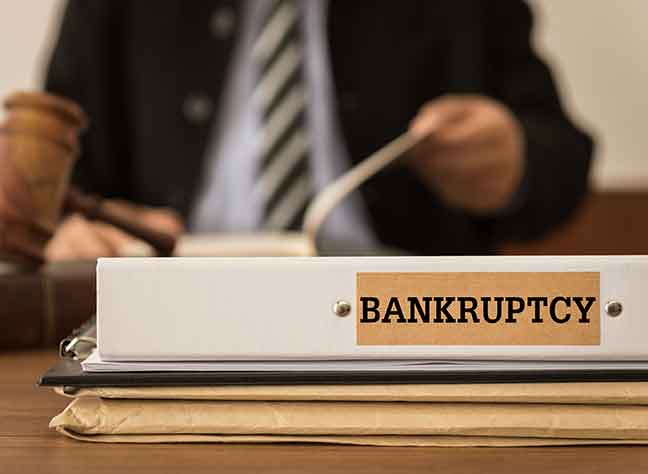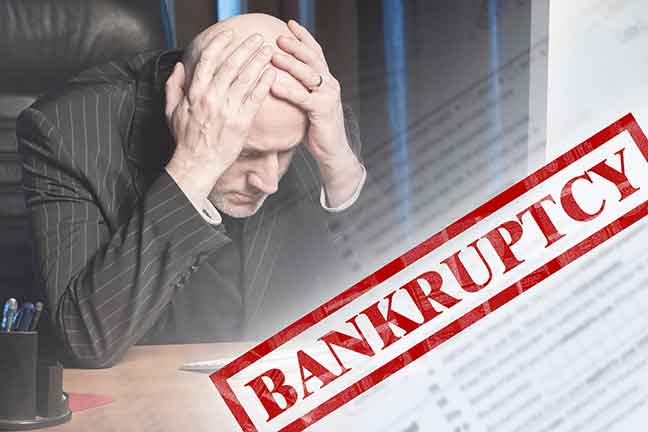So you’re considering filing for bankruptcy in Oklahoma? You’re definitely not alone. Lots of folks find themselves in financial hot water from time to time. The good news is that Oklahoma bankruptcy laws are designed to give people like you a fresh start. The process definitely isn’t easy, but once it’s done, you’re going to feel like a huge weight has been lifted off your shoulders.
To start, determine what chapter of bankruptcy is right for your situation and gather all your financial paperwork. Then comes the long list of forms, court hearings, credit counseling, and schedules. It can get overwhelming pretty quickly. However — with some determination and perseverance, you could complete the bankruptcy process in Oklahoma. The freedom of a clean slate makes it all worthwhile. Now let’s dig in and go over everything you need to know about how to file for bankruptcy in the Sooner State.
Where to File For Bankruptcy
First — where do you go to file for bankruptcy?
Federal Court
You’re going to need to file for bankruptcy in a federal bankruptcy court. These are special courts that only handle bankruptcy cases. The location depends on where you live and type of bankruptcy you’re filing for.
For most individuals in Oklahoma, you’re going to file with the U.S. Bankruptcy Court for the Eastern District of Oklahoma or the Western District of Oklahoma. It depends on to the county you reside in.
Your District
- Eastern District: If you live in one of these 26 counties – Adair, Atoka, Bryan, Carter, Cherokee, Choctaw, Coal, Haskell, Hughes, Johnston, Latimer, Le Flore, Love, Marshall, McCurtain, McIntosh, Murray, Muskogee, Okfuskee, Okmulgee, Pittsburg, Pontotoc, Pushmataha, Seminole, Sequoyah, or Wagoner.
- Western District: For the remaining 51 counties in Oklahoma, including Oklahoma County and Tulsa County.
Filing Process
Once you determine the correct court, you’re going to need to complete a bankruptcy petition, forms for financial information, pay the filing fee, and submit everything in person or by mail.
The court then notifies your creditors that you’ve filed. An automatic stay will go into effect, temporarily preventing creditors from trying to collect debts from you.
Legal Advice
Bankruptcy laws are complex, so it’s wise to have an experienced bankruptcy lawyer review your situation. They can ensure you qualify, suggest the best type of bankruptcy for your circumstances, and properly prepare all the documentation. This provides the best chance at a successful discharge of your eligible debts and a fresh financial start.
Do You Qualify to File for Bankruptcy in Oklahoma?
Filing for bankruptcy is a big decision with long-lasting consequences. But for many Oklahomans struggling with overwhelming debt, it can provide much-needed relief and a fresh start. So how do you know if you qualify?
Means Test
The first hurdle is passing the means test. This calculates your household income against the median income for a similar household size in Oklahoma. If your income is below the median, you automatically qualify for Chapter 7 bankruptcy.
If it’s above the median, don’t lose hope just yet. You may still be eligible if you can prove your disposable income after allowed expenses is too low to reasonably repay your debts. An experienced bankruptcy attorney could help with this process.
Debt Types
Not all debt is treated equally in bankruptcy court. Priority debts such as child support, alimony, and certain tax obligations must be paid in full. Secured debts like mortgages and auto loans are partially protected if you want to keep the collateral property.
It’s the non-priority unsecured debts – credit cards, medical bills, personal loans – where bankruptcy provides the biggest relief by potentially discharging those obligations completely or through a repayment plan.
Credit Counseling
Before filing, you must complete an approved credit counseling course within 180 days. This ensures you understand bankruptcy’s pros and cons and all alternatives have been considered.
The course provider will issue a certificate that must be included with your bankruptcy petition when filed in Oklahoma’s federal court system.
Stay Protection
One of bankruptcy’s most powerful advantages is the automatic stay. The moment your case is filed, this legal injunction stops most debt collection efforts like garnishments, foreclosures, and harassment from creditors.
Just be aware the stay is temporary – your debts must eventually be resolved with discharge or a repayment plan if you want a financial fresh start.

Choosing Between Chapter 7 and Chapter 13 Bankruptcy
When it comes to filing for bankruptcy in Oklahoma, you’re going to need to choose between Chapter 7 and Chapter 13 bankruptcy. Both have their pros and cons, so let’s explore the differences.
Chapter 7: Fresh Start
Chapter 7 is known as “liquidation” bankruptcy. It allows you to wipe out most of your unsecured debts, like credit cards and medical bills. The catch? You may have to surrender some assets to pay creditors.
Qualifying is based on your income level. If you make too much, you may not be eligible.
The process moves quickly, often taking just 4-6 months to complete.
You get to keep “exempt” assets like your car, home, and your retirement accounts.
It’s a great option if you’re drowning in debt with almost no income.
Chapter 13: Repayment Plan
Rather than liquidating assets, Chapter 13 reorganizes your debts into a 3-5 year repayment plan. Make affordable monthly payments to a trustee who distributes the funds to creditors.
Your income must be high enough to fund the repayment plan.
You can keep all assets, even non-exempt ones.
Debts discharged at the end include mortgage arrears, car loans, and some taxes.
It takes longer but may be preferable if you want to hang onto property and catch up on secured debts.
The Choice
The right bankruptcy chapter depends on your unique financial situation. Chapter 7 provides a clean slate but at the cost of non-exempt assets. Chapter 13 restructures debts over time while allowing you to retain your property.
Consider income, assets, and your goals carefully. An experienced Oklahoma bankruptcy attorney can evaluate your bankruptcy case and guide you towards the best solution.
Gathering The Required Documents to File For Bankruptcy
So what are you going to need to file bankruptcy?
Collect Personal Identification Documents
First, gather your personal identification documents. You’re going to need a government-issued photo ID like a driver’s license or passport.
Collect your Social Security card or Taxpayer Identification Number as well.
Gather Proof of Income
Next up is proof of your current income and money coming in. This includes:
Recent pay stubs or earnings statements from employers
Proof of any other income sources like child support, alimony, etc.
Tax returns for the last two years
List Out Your Monthly Expenses
You’ll need to provide a detailed list of your current monthly living expenses. This helps the bankruptcy court understand your financial situation. Be sure to include:
Rent/mortgage payments
Utilities like electricity, gas, water, etc.
Food and grocery costs
Transportation expenses like car payments, insurance, gas
Medical bills or ongoing treatment costs
Childcare expenses
Any other significant monthly obligations
Compile Your Debt Documentation
Of course, you’re going to need documentation of outstanding debts. Gather statements and records showing:
Credit card balances and minimum payments
Mortgage or loan balances
Outstanding medical bills
Unpaid utilities or service bills
Any debt owed to the IRS or other government entities
List Your Assets and Property
Bankruptcy courts need a full picture of your assets too. Make a list of everything you own, including:
Real estate like your home
Vehicles like cars, motorcycles, RVs
Bank accounts and investments
Valuables like jewelry, antiques, collectibles
Any other significant assets or property
With these documents prepared, you’re ready to complete the bankruptcy filing process accurately and efficiently. Stay organized – it makes the road ahead much smoother.
Facing Bankruptcy? Receive Some FREE Phone Benefits!
If you’re reading this blog, you’re likely filing bankruptcy. If you’re currently facing financial struggle, EASY Wireless is here to offer some connectivity benefits!
We are currently offering free and discounted packages for phones with data to eligible individuals just like yourself. Whether you need to keep in touch with friends & family or you want to just save money on your current phone plan, just come to one of our stores where our customer service agent is going to help you apply for your benefits


